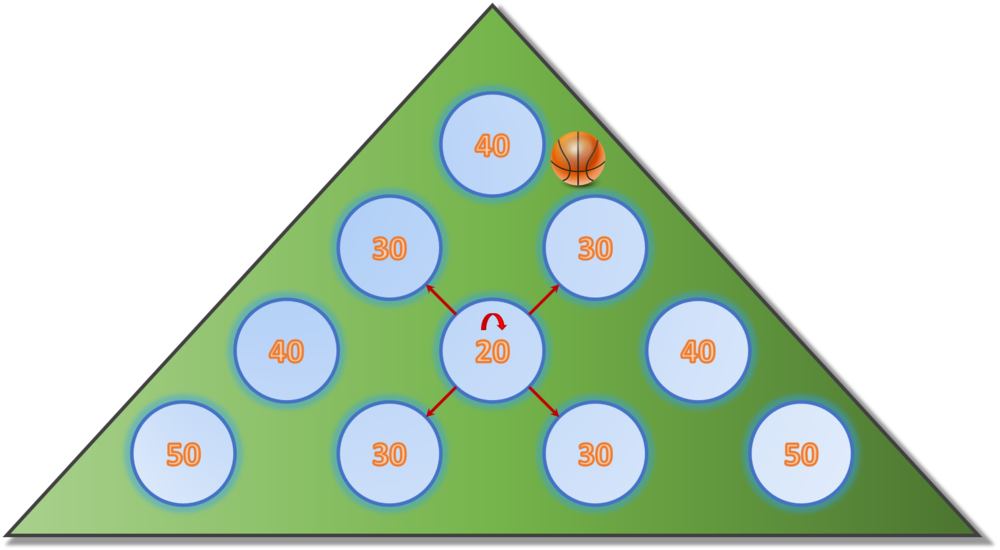ICPC NAQ 2016 B - Arcade!
View as PDFICPC North America Qualifier 2016, Problem B

Have you recently visited an arcade? Arcade games seem to have become more boring over the years, requiring less and less skill. In fact, most arcade games these days seem to depend entirely on luck. Consider the arcade game shown in the picture, which consists of different holes arranged in a triangular shape. A ball is dropped near the hole at the top. The ball either falls into the hole, in which case the game ends, or it bounces to one of its (up to) neighbors, denoted by the red arrows. Different holes have different payouts — some may even be negative! If the ball reaches another hole, the process repeats: the ball either falls into the hole, ending the game — or it bounces to one of its neighbors, possibly ad infinitum!
Write a program that computes the expected payout when dropping a ball into the machine!
Input Specification
The input consists of a single test case. The first line contains an integer
describing the number of rows of the arcade machine. The second line contains
integers
describing the payout (positive or negative) if the ball drops into hole
. Holes are numbered such that hole
is in the first row, holes
and
are in the second row, etc. The
row starts with hole number
and contains exactly
holes.
These two lines are followed by lines, each of which contains
real numbers
, denoting the probability that the ball bounces to its top-left (
), top-right (
), bottom-left (
), or bottom-right (
) neighbors or that the ball enters the hole (
). Each probability is given with at most
decimal digits after the period. It is guaranteed that
and
. If a hole does not have certain neighbors because it is located near the boundary of the arcade machine, the probability of bouncing to these non-existent neighbors is always zero. For instance, for hole number
, the probabilities to jump to the top-left and top-right neighbors are both given as
.
You can assume that after the ball has bounced times, the probability that it has not fallen into a hole is at most
.
Output Specification
Output a single number, the expected value from playing one game. Your answer is considered correct if its absolute or relative error is less than .
Hint: Using Monte Carlo-style simulation (throwing many balls in the machine and simulating which hole they fall into using randomly generated choices) does not yield the required accuracy!
Sample Input 1
4
40 30 30 40 20 40 50 30 30 50
0.0 0.0 0.45 0.45 0.1
0.0 0.3 0.3 0.3 0.1
0.3 0.0 0.3 0.3 0.1
0.0 0.3 0.3 0.3 0.1
0.2 0.2 0.2 0.2 0.2
0.3 0.0 0.3 0.3 0.1
0.0 0.8 0.0 0.0 0.2
0.4 0.4 0.0 0.0 0.2
0.4 0.4 0.0 0.0 0.2
0.8 0.0 0.0 0.0 0.2Sample Output 1
32.6405451448Sample Input 2
2
100 50 50
0.0 0.0 0.45 0.45 0.1
0.0 0.90 0.0 0.0 0.10
0.90 0.0 0.0 0.0 0.10Sample Output 2
76.31578947368
Comments